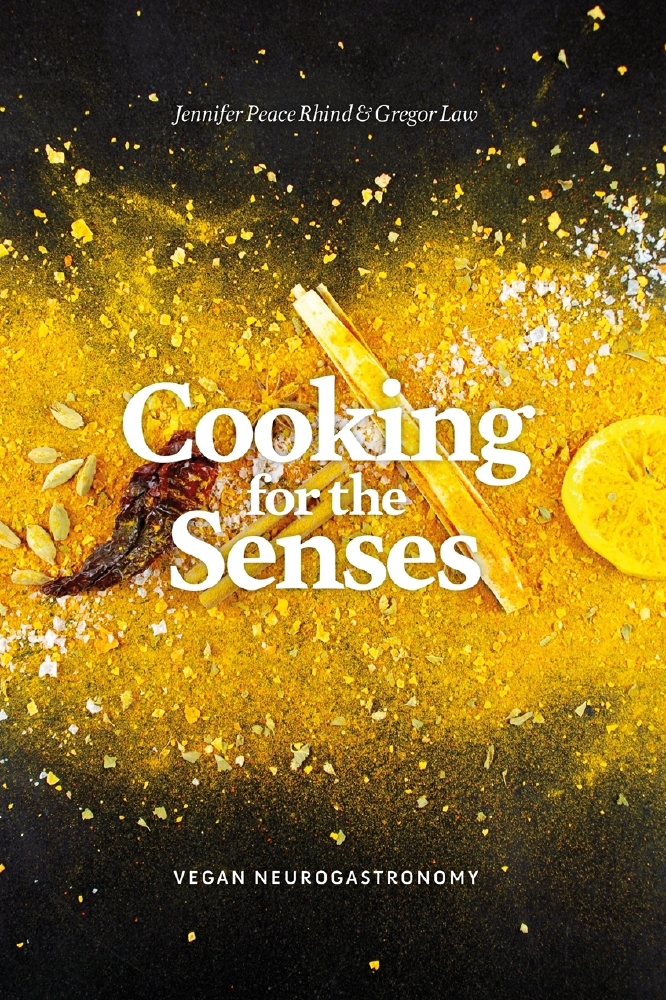All of our senses are involved in a complex interplay which results in our brain’s perception of flavour. Probably our sense of smell is the most important – just think of how we lose our sense of ‘taste’ when we have a cold. When we lose our sense of smell, it is actually our perception of flavour that is diminished, because we can still identify hot, salty, sweet, sour and bitter sensations. We are very often guided by how we think something will taste by how it looks – if we are denied sight of our food it can be very difficult to discern flavours. Without our sense of touch (in this case we call it ‘mouthfeel’) we cannot appreciate the texture of our food, and we also need to acknowledge the importance of sounds including the internally generated crunching and chewing noises which are also closely linked with our perceptions of food textures.

Cooking with the Senses
Of course, external factors play a part too; while we are cooking and eating, we will be affected by ambience, noises, music, colours, lighting, pressures of time – even the way our food is plated up and served will alter our perception of flavour. Food preparation, cooking and eating are the only activities where we can consciously use all of our senses!
So, how can we maximise our appreciation of flavour?
- Be aware of your surroundings. It is not always possible to have control of your environment when you are eating, but you will be astonished how pleasant surroundings can significantly enhance your enjoyment of food.
- Train your palate. Learn to identify and discern flavours, and to discriminate and describe. Like everything else, the more effort you put into this, the more you will get out of it. Be curious, explore your boundaries and then push them. Enjoy experimenting with new ingredients and world cuisines.
- Explore umami. The fifth taste, this Japanese word means something that is delicious and savoury, conferred by an amino acid called glutamic acid and its salts, and their synergistic interactions with other nucleotides. Umami can also take the edge off bitterness! Umami seasonings include shoyu, tamari and miso, Marmite, yeast extract, tomato ketchup, black garlic, mushroom salt and seaweed (try seaweed salt if the real thing doesn’t appeal.)
- Don’t underestimate your sense of smell. When you are cooking with herbs and spices, explore the relationship between aroma and flavour. For example, crush a basil leaf and enjoy its aroma using your orthonasal sense – the one we normally think of as our ‘sense of smell’. Then chew it and swallow… when you swallow, the air from your mouth cavity is pushed up to the back of your nose and gives a different sensation. This is our retronasal sense of smell, and it is unique to humans. The leaf does not have much taste – it is all to do with aroma!
- Seasoning is crucial. Salt, when used correctly, greatly enhances our appreciation of other flavours. There are many different salts to discover too!
- Temperature is key. Low temperatures diminish flavour, so never drink iced water with your meal. Warmth intensifies flavour, and many foods taste better at room temperatures or above.
- Get your money’s worth! Learn from traditional cuisines about how best to use herbs and spices. Always use the best you can afford, and be aware of shelf life – old spices will do nothing for your dishes.
- Plate up with care. Studies have shown a direct link between crockery and cutlery and the perceived quality and quantity of food, and hence flavour perception and enjoyment. In essence, the chunkier or heavier the crockery or cutlery, the more substantial the food will feel. Use the right kind of glassware too, and ensure that your choice of drinks complements your menu. There’s nothing worse than red wine with a lemon dessert!
- Ambience is very important. Take time to set your table – whether for yourself or guests – and create a pleasing environment. Don’t forget that your mood influences ambience too! Smile, relax and enjoy the act of food preparation and nurturing others. It is, after all, an act of love and friendship.
- Let there be music! Music influences our perception of flavour. White wine is better paired with popular music (pick your favourite genre) and red with jazz or classical (again, to your ‘taste’). Background music will also have a subtle yet powerful influence on your perceptions of flavour and your enjoyment of a meal.


Follow this link for more information or to buy a copy of Cooking for the Senses by Jennifer Peace Rhind and Gregor Law.

